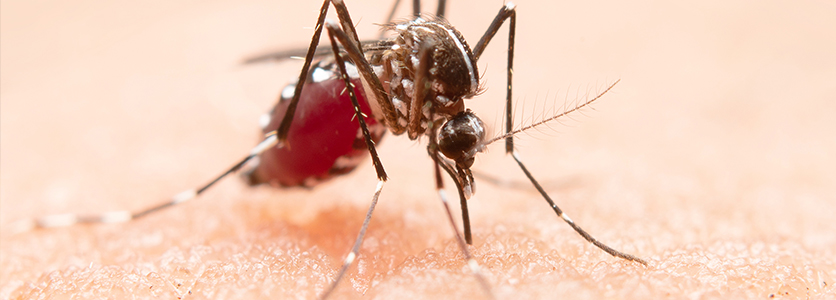While we take pride in our efforts in controlling COVID-19 pandemic in our country, dengue cases have been increasing at a worrying pace. According to data from Ministry of Health, since January 2019 until 6th June 2020, a total of 48,584 dengue cases have been reported. An increase of 8% of dengue cases recorded every week is of grave concern with 84 deaths and counting. Majority cases which were fatal were due to patients’ delay in seeking treatment. According to Malaysia’s Health Director-General, Datuk Dr Noor Hisham Abdullah, the surge of dengue cases in 2020 is from June till September.
Re-introducing dengue
Dengue is a vector-borne disease caused by the dengue virus. The virus spreads through the Aedes mosquito which is most active during sunrise and sunset. There are four strains of the dengue virus; namely, DEN 1, DEN 2, DEN 3 and DEN 4. A person who has contracted a particular strain of the dengue virus will have immunity against that particular strain only. For example, a patient with DEN 1 only has immunity against the DEN 1 virus strain so he/she is still at risk of contracting dengue fever from DEN 2, DEN 3 or DEN 4.
What to look out for
A dengue patient will show symptoms after four to seven days after being bitten by the Aedes mosquito. These include:-
- Fever
- Joint pain
- Muscle pain
- Headaches
- Eye pain
- Nausea
- Diarrhoea
- Rashes
The three phases of dengue
Dengue fever can be divided into three phases: febrile, critical and recovery.
The febrile phase comprises of fever that lasts three to five days. During this phase, the patient experiences fever, joint pain, muscle pain, headaches and other symptoms mentioned earlier.
After three to five days, the patient enters the critical phase. This lasts between 48 to 72 hours. During this phase, the patient recovers from fever but there is a fall in platelet count and white blood cell count. Following that, the patient starts showing different symptoms. Some of them do not has serious symptoms whereas some experience complications such as internal bleeding, water retention in the lungs or stomach, low blood pressure, kidney failure and liver failure as well as coma.
This can lead to death.
After 48 to 72 hours, the patient will go through the recovery phase where dengue symptoms dissipate while blood platelets and white blood cells return to normal count.
On average and from end to end, it takes seven to 10 days before a dengue patient starts recovering from the disease. The following diagram is from the 2015 Management of Dengue Infection in Adults – Malaysia Clinical Practise Guidelines. It explains all three phases:

What to do when you display symptoms
To date, there are no specific treatments or immunisation for dengue fever. Patients who experience signs and symptoms of dengue must seek treatment immediately. Blood test must be carried out in order to get the diagnosis. Dengue cases must be notified to health officers so that preventive actions can be taken. This includes fogging in the patients’ area of residence.
For patients who have mild symptoms, he or she should rest at home under observation with daily blood tests at the clinic or hospital. For those who have warning signs, he or she must be referred to the hospital for treatment and close monitoring. On average and from end to end, it takes seven to 10 days before a dengue patient starts recovering from the disease. The following diagram is from the 2015 Management of Dengue Infection in Adults – Malaysia Clinical Practise Guidelines. It explains all three phases:
Warning signs include:-
- Stomach pains
- Vomiting more than three times in 24 hours
- Diarrhoea more than three times in 24 hours
- Water retention in the lungs, heart and stomach
- Spontaneous bleeding
- Fatigue
- Disorientation/confusion
- Liver tenderness on palpation
- Abnormal blood test results
The high risk group
Apart from patients who have warning signs as mentioned above, high risk patients should also be referred to the hospital for close observation. These comprise patients with the following existing conditions:
- Diabetes mellitus
- High blood pressure
- Heart disease
- Kidney disease
- Obesity
- Aged 65 and older
- Pregnant
- On blood thinning medication
What we can do to improve situation
One of the most effective ways to do this is to ensure that the Aedes mosquito has no breeding grounds. The Aedes mosquito breeds in stagnant water even if the container is as small as a 50-cent coin. Therefore, we must be vigilant and make sure that we:-
- Pour out water that collects in plant pots and trays.
- Dispose containers that could potentially collect water.
- Unclog drains including rooftop drains.
- Ensure water tanks are covered.
Try to avoid getting bitten by the Aedes mosquito. Avoid outdoor activities during sunrise and sunset because this is when the Aedes mosquito is active. If you need to be outdoors during that time, wear bright-coloured clothing with long sleeves and long pants. Apply mosquito repellent on exposed areas. Should you find Aedes mosquitos in your house compound, use a mosquito repellent spray.
In short, we must work together to fight dengue. Just like COVID-19, dengue too is a fatal disease. Always be vigilant and protect yourself and your family against dengue.
Share:
Was this article helpful?
Share:
Was this article helpful?
Health Packages
Elevate your health with tailored health packages at Columbia Asia Hospital. Take charge of your health journey today.
AIA Policyholders Self-pay Benefits
Pink October 2024
From
RM80

